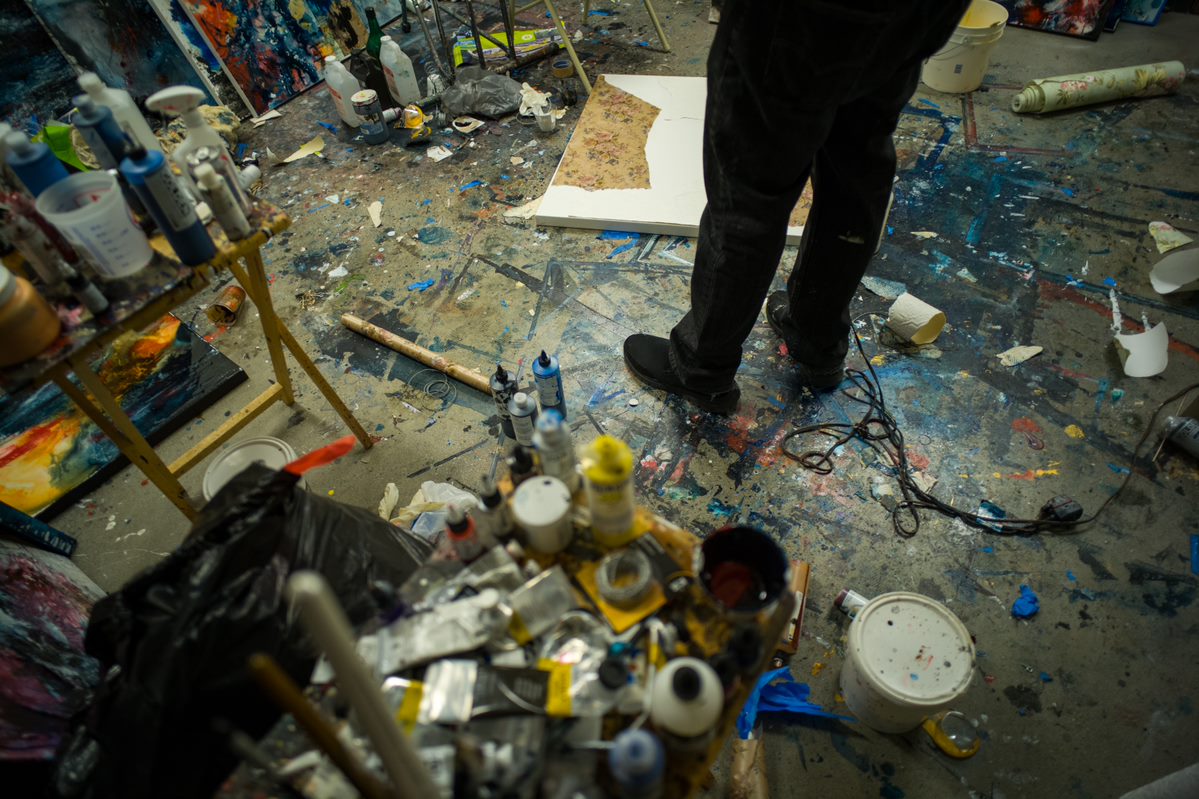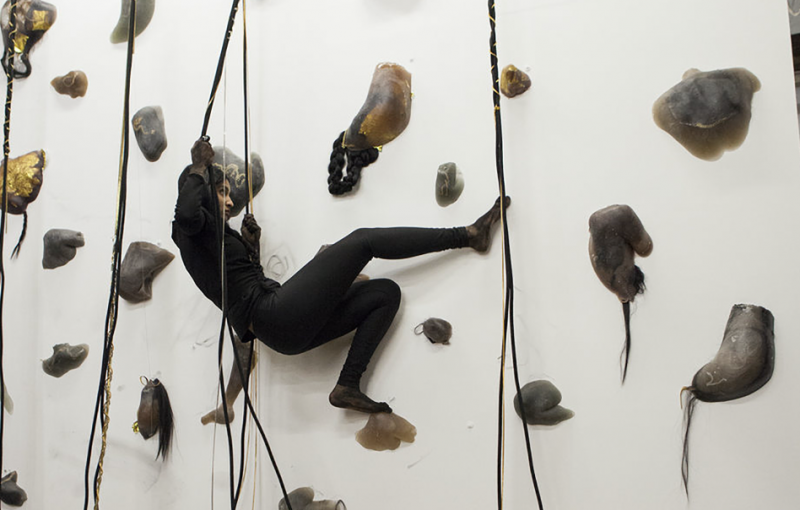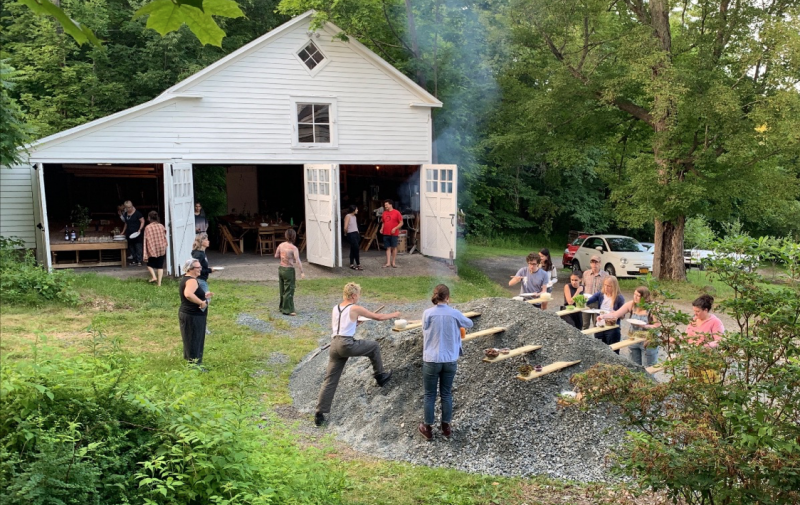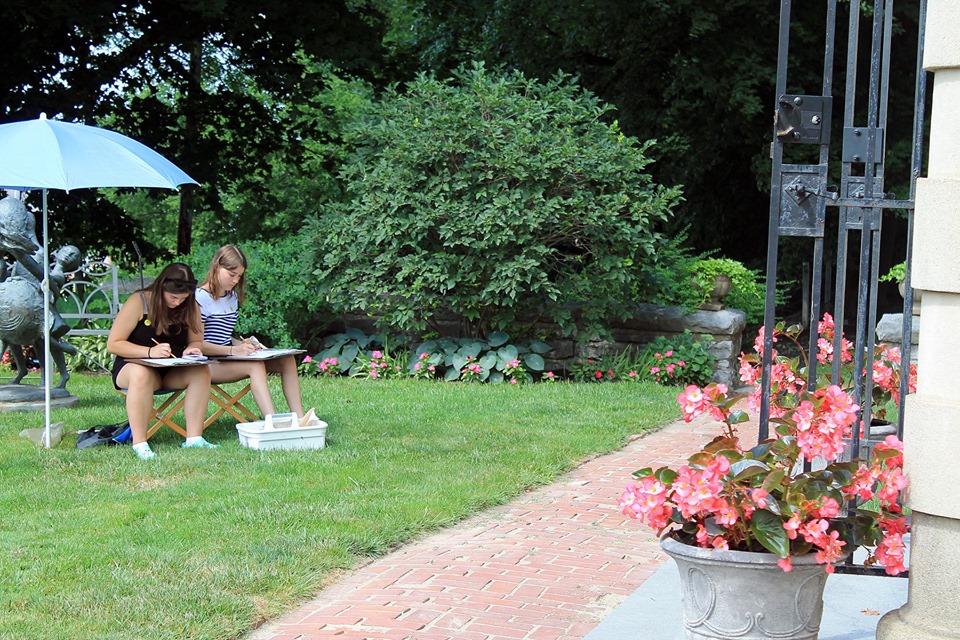Photos by Richard Lovrich
You can identify an Alex Waters painting by its bluish blacks spiked with silver, its glaze and the only drawn elements—inscribed, ubiquitous, elemental cityscapes. They are generic and understated, but omnipresent. Each abstract piece is intensely personal. Waters’ oeuvre is deeply informed by family and place. He paints for himself, from himself.

Waters grew up in Schoharie County, considers himself a country boy and grapples with the concept of the cities he now lives and works in. Almost in revenge, he traps the city in his work.
His family sold their large Victorian Schoharie home before the 2011 floods. The tragedy nonetheless moved him deeply and permanently. His forearm is tattooed with an image of that home: An image as simple and to the point as a symbolic figure from a Paleolithic cave painting.
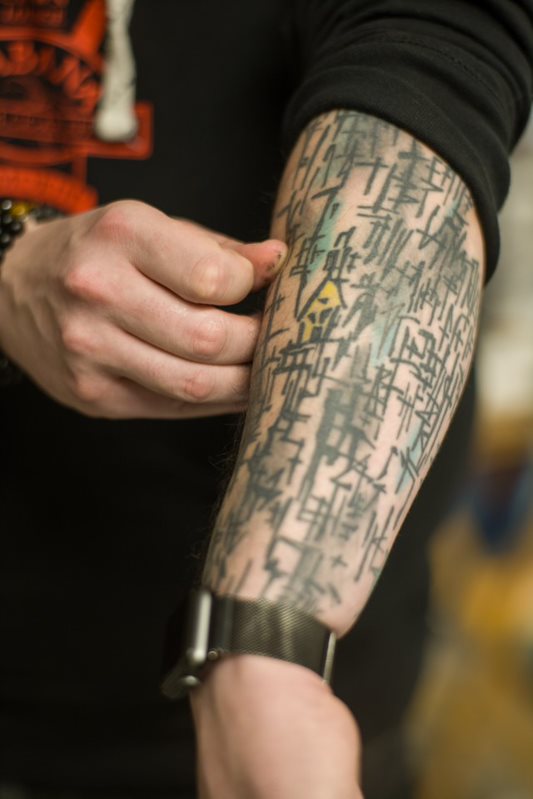
Waters’ medium demands art supplies, hardware items and a stop at the pharmacy. Arriving for the interview at his rented studio at the Albany Barn, a canvas greets me with a cyclone’s eye, encircled by a vortex of completed pieces, experiments and failures, equipment, supplies and empties. That canvas—a splattered, Pollack-like diary—rests on the concrete floor. Waters worries about the mess he will leave when he moves on, but has the correct chemistry experiment solution in mind for it. All very Alex Waters.
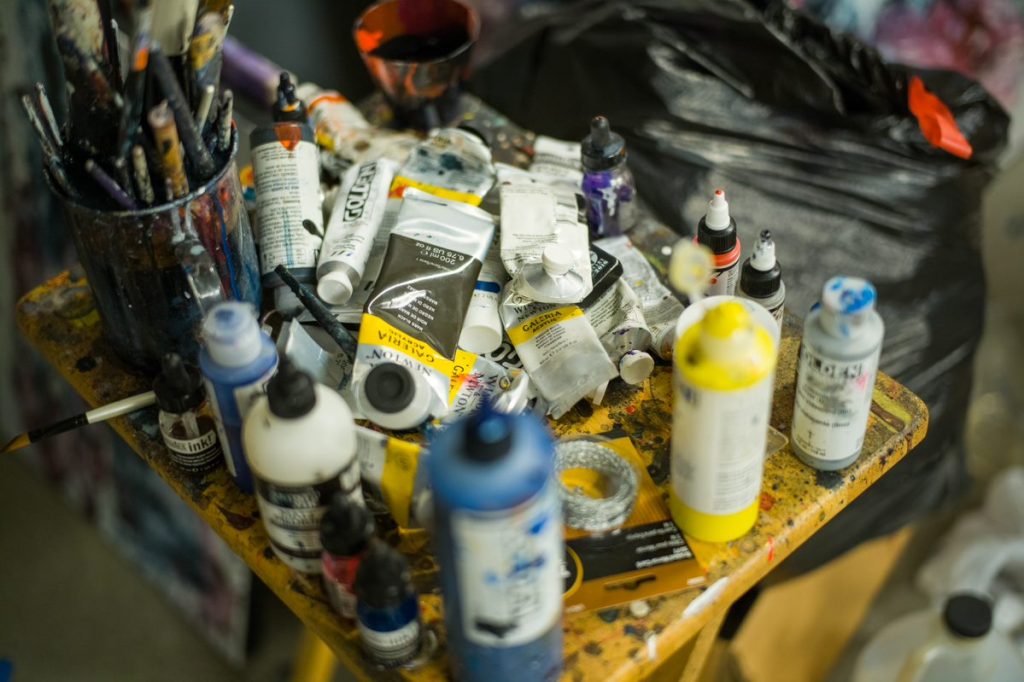
The composition that will eventually fill that canvas begins with a piece of floral wallpaper applied to its surface. Wallpaper, printed or uncolored and textured, does not always shout its inclusion, but is a familiar feature in his work. The wallpaper is always about his late mother, who loved wallpaper. For Waters, it represents beauty. Its presence brings him peace. Waters refers to its use as an inside joke of sorts.
Wallpaper as fine art and fine art, ultimately, becoming wallpaper.
The wallpaper is torn by hand and set in place. When positioned, melted wax is poured and molded onto it as a resistant. When the wax has cooled, which takes but a few moments, acrylic paint is squeezed, poured and pushed across much of the surface. While free to move, the paint is urged by tilting to join, pool and spread. Timing is crucial. Each step begs the next cue-up. One color joins, obscures and blends with another in a melee of process that culminates in dousing with rubbing alcohol.

Then the real alchemy starts. The piece now progresses, more or less automatically, through phases as the alcohol wrinkles and drives the paints. What I witnessed, in sequence, was a satellite image of earth’s oceans, followed by a single-celled organism, then a series of explosions.
Waters adopted the technique of using rubbing alcohol as a catalyst in his work in a form of mad-scientist history. It was an accidental spill of alcohol—scotch to be specific—on one of his paintings in progress many years ago. He stared in wonder as the booze shepherded the acrylics around.
Now, using that very technique, he must wait, at least overnight—a time when the whims of interaction wield the brush and become the artist.

When the paint is dry and the alcohol is evaporated, he employs a hairdryer and at times, a torch, in a step that brings the artistic process back under his total control. The heating units are focused to burn off the wax wherever he wants to expose the painted-over wallpaper. Finally, we plumb the depths of a completed Waters painting through a deep, crystalline pond of its final glaze of bar top epoxy.
When it comes to his process, Waters likes 75 percent pure intent to 25 percent chemical reaction. He has determined where he wanted the wallpaper, the paint and where he burned off wax. The remaining percent is when the piece takes the lead and makes itself.

A true representation of a Waters painting might be a video of its process. For much of the time, the surface is morphing. When completed, his pieces remain in a state of perpetual slow motion. He expects those who purchase his art will find a new detail each time they view it, discerning another relationship between color, texture and canvas.

While Waters would very much like to live solely off his art, he does not see that in his future. He paints because he wants to; because he must. His work does sell, though. For living expenses, and to support his passion, he manages a smoke shop in Colonie. Waters lives near the shop in an apartment with his girlfriend, a photographer, and his handicapped father, who they care for together and is a vital part of their lives.
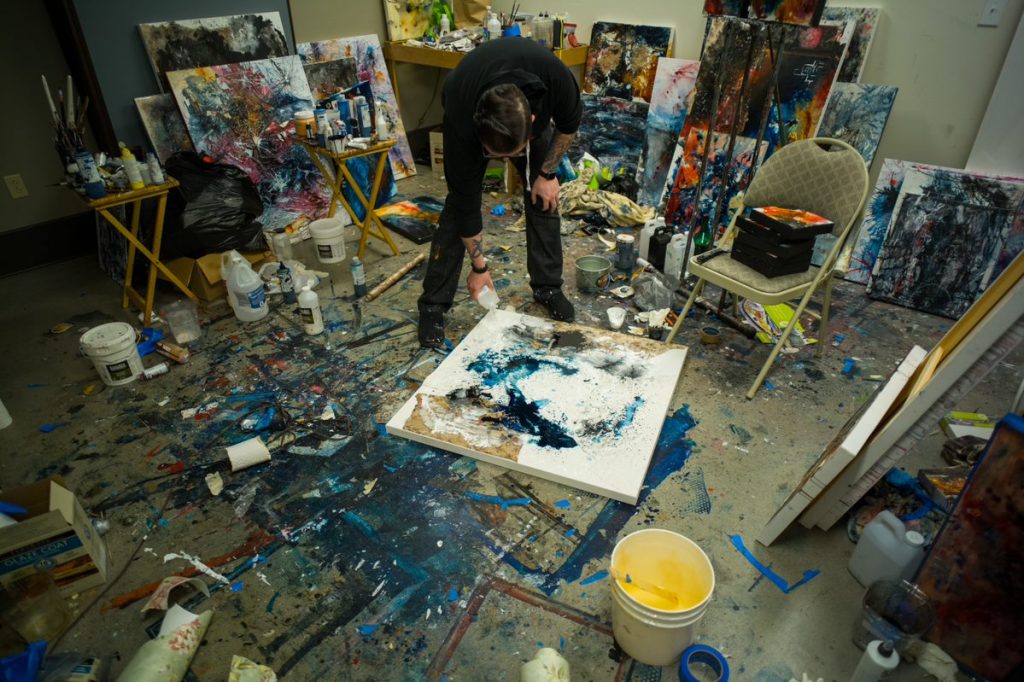
Despite his efforts at control in his work, there is the sense that a random moment in a process has been frozen, its progress stayed by his intent.
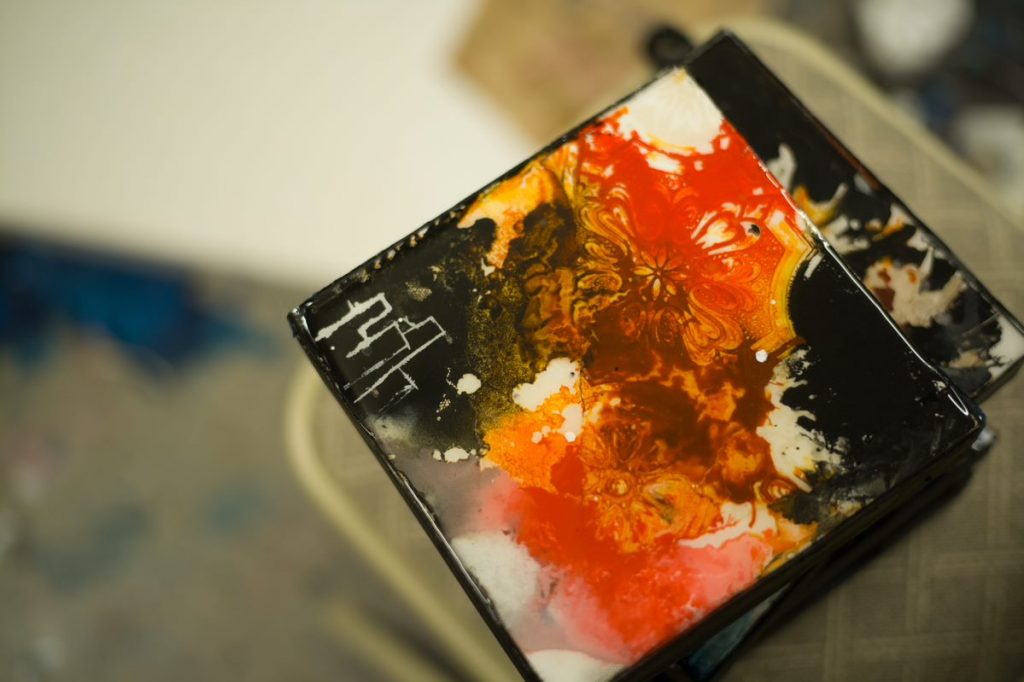
Waters cites “the intent” of coming to work at his Barn studio as essential, but when he leaves he does not leave the painting in progress behind. He is planning his next moves and will return in the morning to see what has happened to it. He is happier with some paintings than others, but he shows them all. Each one is important: a record, a page in his diary and not to be discarded.


